QuestionI'm new to aquariums. I've bought a used 29 galon tank with a hood and now I'm trying to figure out what kind of filter to use. I'm planning to have hardier tropicals like live bearers and gouramis. I want to set it up in my bedroom, so I want a very quiet system. I thought I would use a undergravel filter and have a long air line going into another room where the noisy air pump would be. That way I would hear the pleasant sounds of bubbles but not the unpleasant sound of the motor. But this problem of stringing the air line to another room is turning out to be a little complicated -- it means drilling holes in walls and such. Is there a simpler solution? Are the Penguin power filters very quiet? Is there another way to acheive what I'm trying to do? Thank you.
AnswerHi Elyse;
Penguins are pretty quiet in my experience. Some filters have a slight vibration because it touches against the glass, but I remedy this with a small rag or cotton batting between the outside of the tank and the filter box. With a background on the tank, you don't even see it.
Here is my article on new tanks to help you with the process once you get started;
**********
New Tank Syndrome or Break-in Period
So you have a new tank and you filled it up, put the filter together, mounted the heater into place and turned on the lights. You have all the plants and decorations where you want them....
You are ready for fish.
But, your filter is not ready for a full tank of fish yet.
The filter is running and moving the water and cleaning out crud, right? Of course!
But a very important part of your filter is the part you can't see. An aquarium filter removes the larger visible stuff, but it also must remove the dissolved fish waste that turns into ammonia in the water. To do this, special bacteria must grow in the filter system and on the particles of gravel in the bottom of your tank. This process occurs even on a limited scale in little fish bowls that have no filter in them.
This is "New-Tank Syndrome" or the "Break-in Period". The entire process takes 6 to 8 weeks to complete because these "nitrifying" bacteria grow quite slowly.
Start off with only two hardy fish for every ten gallons of water and don't add more until the 6 to 8 weeks has gone by. Hard to be patient, but it is worth it to keep your fish alive and healthy. As a matter of fact, the bacteria cannot develop without fish in the tank. You can let that tank sit forever without fish in it, but as soon as the first fish goes in the process begins. Avoid changing the filter pads during break-in. This removes the bacterial colonies that are essential to a balanced aquarium. You can rinse the filter pad out in a container of aquarium water. This will preserve most of the bacteria colonies while still allowing your filter to flow freely. Even using bacteria additives and water conditioners when you first set up the tank will not make a tank cycle by itself. If there are no fish to provide food (fish waste) for the bacteria, the beneficial bacteria cultures will die and you will have to start the colonies all over again once fish are added to the tank.
Feed your new fish VERY lightly. Any excess food will cause additional waste your system cannot afford to have right now. If you see food floating around or lying on the plants and gravel after five minutes, too much food is going into the tank. Cut back a little each time you feed until it is ALL gone 5 minutes after you feed them.
During this "break-in period" your tank will become cloudy and milky looking. You may have to tolerate this for the entire break-in period but it is only temporary. Changing 25% of the water three times a week until the break-in period is over helps a great deal. Changing water reduces the ammonia and nitrites that rise while the bacteria continues to multiply. If ammonia and/or nitrites become too high, your fish will become stressed and possibly die. Use a good water conditioner when you replace the water and make sure it is the right temperature to avoid shocking your fish.
When the break-in period is over, do regular water changes and vacuum the gravel at the same time. A change of 25% every one to two weeks is a good rule of thumb. It simply needs to be done for healthy fish.
Following these guidelines will help you get your new tank on the right track.
**********
Followups welcome.
At Your Service;
Chris Robbins

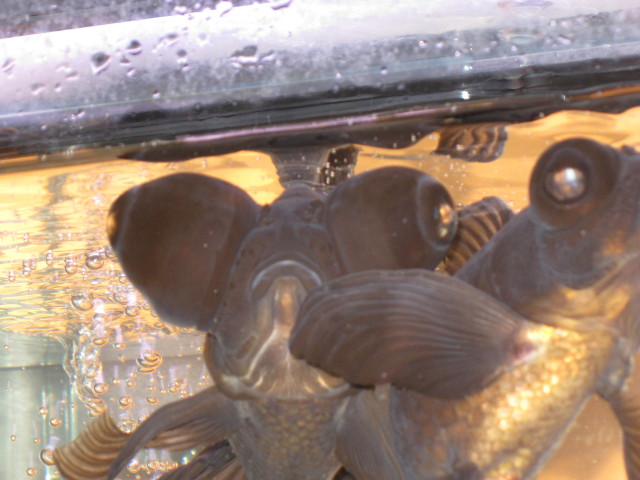 black moor eye problem
QuestionQUESTION: I have noticed today a white spot (pi
black moor eye problem
QuestionQUESTION: I have noticed today a white spot (pi
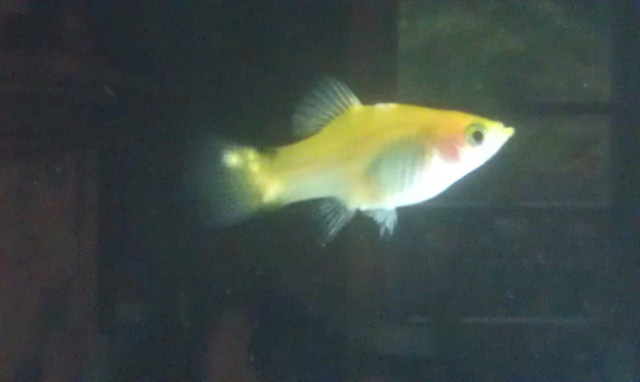 Large white patches
Question
Yellow Platy with spot
Ive had this fem
Large white patches
Question
Yellow Platy with spot
Ive had this fem
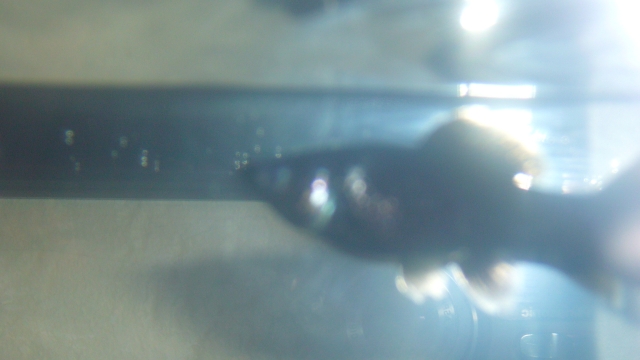 sick mollie
Question
sick mollie
I have a black mollie that is moth
sick mollie
Question
sick mollie
I have a black mollie that is moth
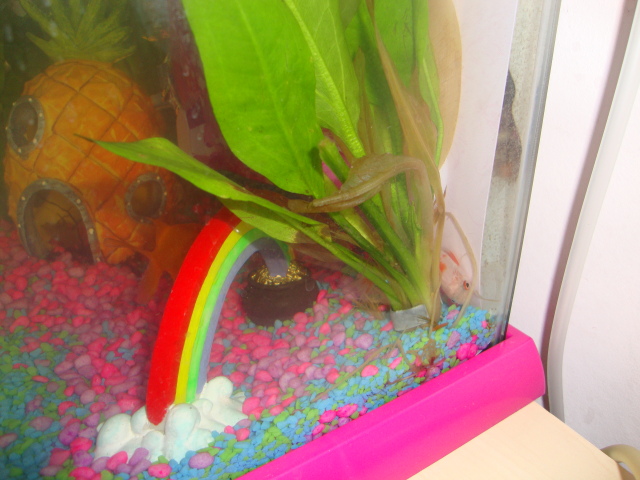 goldfish behaviour
Question
white fish
hi
i have had a small 18l tank now
goldfish behaviour
Question
white fish
hi
i have had a small 18l tank now
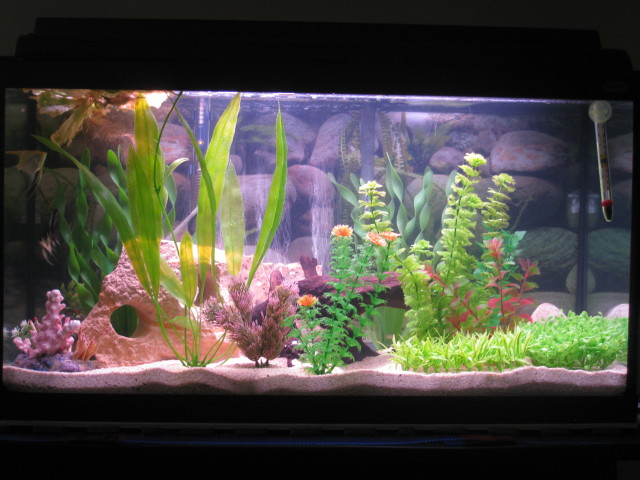 new aquarium
Question29 pic
QUESTION: does my aquarium look g
new aquarium
Question29 pic
QUESTION: does my aquarium look g